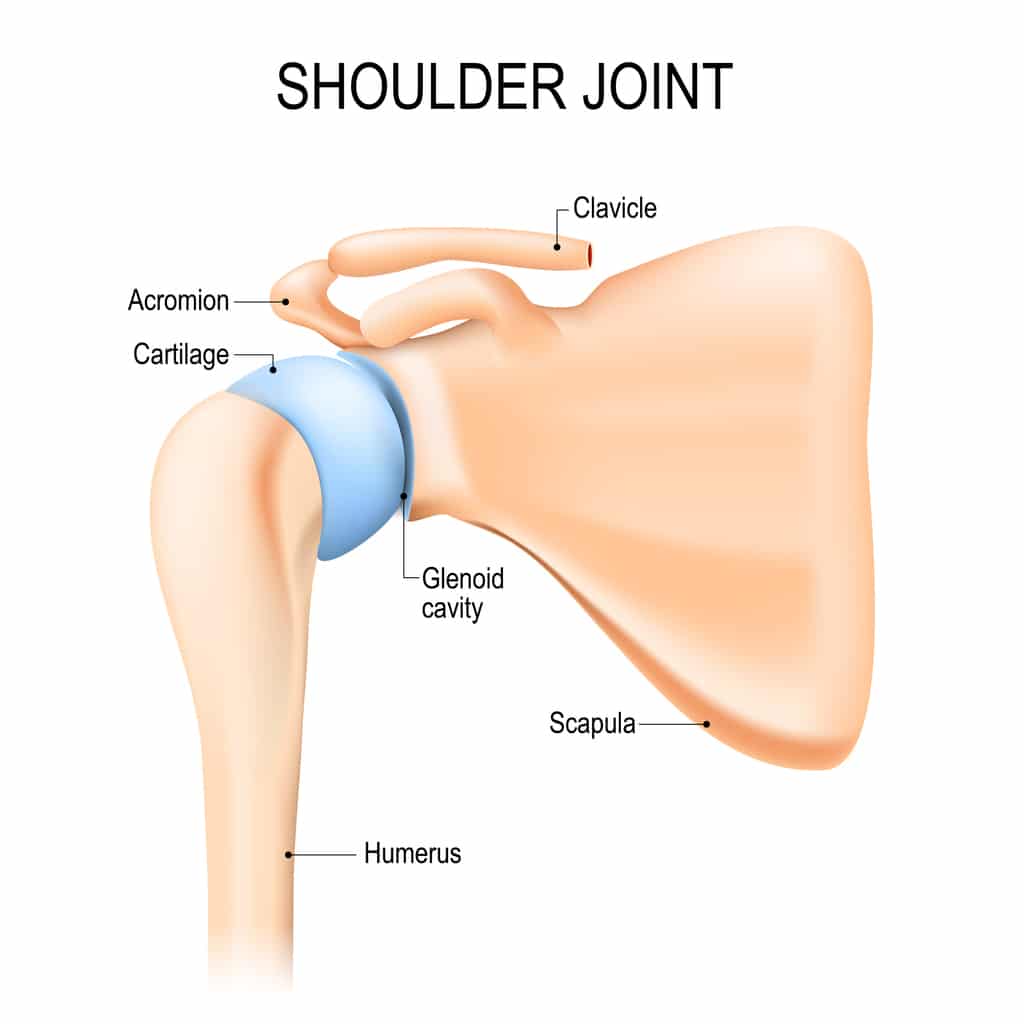What is a Bankart Lesion?
Surgery isn’t something any of us want, but if you’ve sustained a tear in your shoulder joint called a Bankart lesion, there is a chance you may not be able to avoid it. In order to understand the causes of and treatment for this injury, it’s necessary to first understand the anatomy of your shoulder.

What is a Bankart Lesion?
The shoulder is a rather complex and impressive joint — it’s the most mobile joint in the body, yet it typically maintains its stability in healthy individuals.
The shoulder is a ball and socket joint, meaning the ball (in this case the head of your arm bone) fits into a socket, a cavity called the glenoid. The glenoid cavity is lined with tough connective tissue called the capsule and just inside that is the labrum. When you tear your shoulder’s labrum, you’ve sustained a common ligament injury called a Bankart lesion.
A Bankart lesion typically coincides with a dislocated shoulder (when your arm bone slides totally out of the glenoid) or subluxation (when it slides only partially out). Most Bankart lesions occur on the anterior, or front, side. A Bankart lesion on the posterior side is referred to as a reverse Bankart lesion.
If you also break the bone of the shoulder socket, the tear is then called a bony Bankart lesion. This is sometimes accompanied by damage to the humeral head, which is referred to as a Hills-Sachs lesion. It is more common for these two issues to occur together than in isolation.
Causes of Bankart Lesions

A fair amount of trauma or force is generally necessary to dislocate one’s shoulder. Young men in their teens and 20s are most at risk for dislocating their shoulders, often as a result of acute injury or repetitive use.
Things like collisions or falls during sports or overuse from activities such as swimming, pitching, gymnastics, tennis, volleyball, or weight lifting are common causes of shoulder dislocations. Car accidents, non-sports falls, and repetitive motions such as swinging a hammer also often cause shoulder injuries.
Sometimes people, such as those who are double-jointed, have a genetic predisposition to loose ligaments. Just as there are different causes of a dislocated shoulder — and therefore a Bankart lesion — symptoms, severity, and treatment also vary.
Bankart Lesion Diagnosis
An orthopedic shoulder specialist can diagnose the severity of your injury and determine proper treatment, including the necessity for surgery. They will use a physical exam and likely an X-ray or MRI to differentiate your issue from issues that may present similarly, such as a torn rotator cuff or arthritis.
Bankart Lesion Pain

Because your symptoms can be similar to those of other shoulder injuries, an orthopedic specialist is integral for proper diagnosis and treatment. Common symptoms include:
- Pain, especially when reaching your arm behind your back or over your head
- Discomfort during normal daily activities or that’s worse at night
- A shoulder that feels weak, loose, or unstable, making you nervous about moving it or using it in certain ways
- Decreased range of motion
- A grinding, clicking, or popping sound
- The sensation that your shoulder is “catching” during certain motions
- Visible deformity or obvious physical dislocation
- Swelling, bruising, or numbness in the shoulder
- Spasms or tingling in the neck or arm
Bankart Lesion Repair
Treatment of a Bankart lesion injury is similar to treatment of other orthopedic injuries. Rest your injury, and if your pain is from a repetitive use issue, stop performing that activity. Use a shoulder sling to keep your arm immobilized.
Talk to your orthopedic shoulder specialist or sports medicine doctor about the proper use of NSAIDs like aspirin or ibuprofen to help manage your pain. Your orthopedist may also give you a corticosteroid shot to help curb the inflammation caused by your injury. After some healing time, certain physical therapy exercises can help regain your range of motion and strength as you heal.
Sometimes a Bankart lesion does not heal through these methods alone, and you may suffer from chronic shoulder instability. Repeat dislocations in the future become more likely if a Bankart lesion is left untreated.
Surgery for a Bankart Lesion
If your torn labrum is not healing or reattaching on its own, you may need either arthroscopic or open surgery to repair it and stabilize the joint. Recovery from this surgery generally takes 6 to 12 weeks. Activities with the potential for injury-causing contact will likely remain restricted for many months or even up to a year.
If you’re experiencing the symptoms of a dislocated shoulder or Bankart lesion, please contact us or comment below.
Leave a Reply